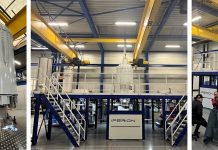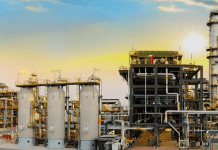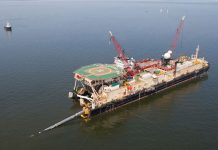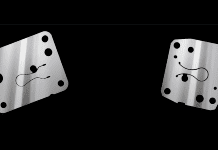Text courtesy of ISSF, Photos by Cat Vinton
___
The structure itself is a 20-ft-tall (6 m) 316L stainless steel cube weighing about 200 tons, with the median tide sitting around 10 ft (3 m) up the façade. The building is accessible via a submerged staircase that rises above the water line to a dry elevated viewing platform.
The entire installation is designed to operate across three tiers, with some sculptures sitting on top of the cube, and others sitting well below the waterline.
“It exists in three different elements,” says Mr Taylor, explaining the work’s multifaceted approach. “A set of sculptures that interact with the sky and the atmosphere. There’s a set of works that are in the tidal area. They live both above the water and below the water. And then there a set of submerged works. The idea is that it’s about taking all the elements of our planet and showing that everything is connected.”
Existing between two worlds
This unique and ambitious project took around nine months to develop and the complex structural formation utilized high-grade marine stainless steel and pH-neutral cement. The cube’s walls reference coral patterns while also being engineered to allow currents and marine life to pass through it.
Says Mr Taylor: “I wanted to create something that existed between two worlds, a bridge that allowed us to see through the surface of the sea. A way to re-imagine our interactions with the natural world and form a controlled space where marine life can come and go as it pleases.”
Coralarium is accessible by boat or a short swim from the shore and is open to snorkelers and free divers.








